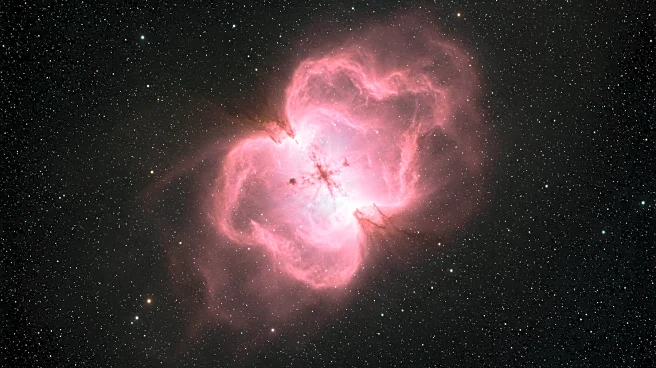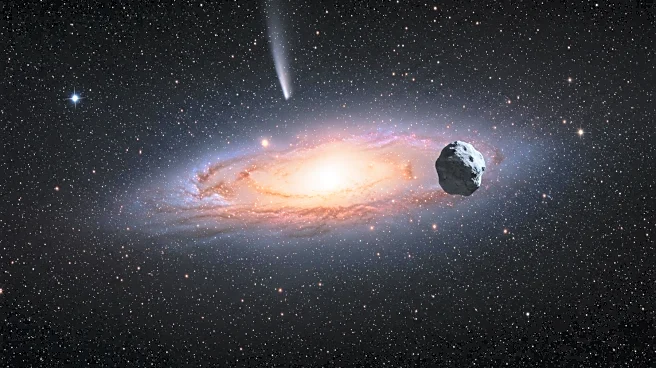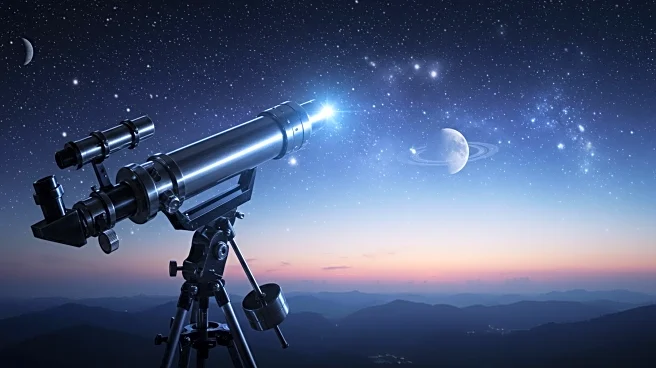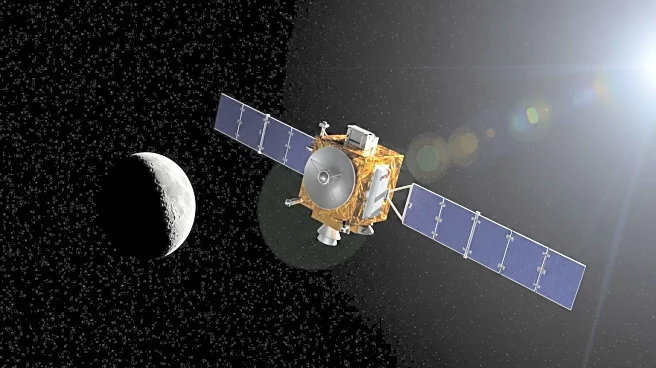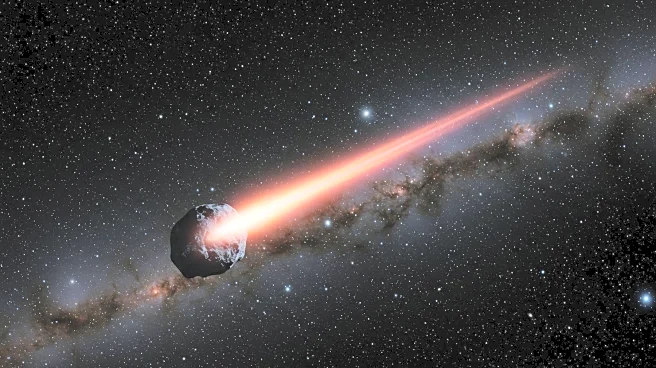What is the story about?
What's Happening?
NASA's Hubble Space Telescope has released a new image of the spiral galaxy NGC 2835, located 35 million light-years away in the Hydra constellation. This image incorporates new data capturing H-alpha light, revealing bright pink nebulae along the galaxy's spiral arms. These nebulae are significant as they indicate various stages of star life, including H II regions formed by newborn massive stars and remnants from dying stars. The observations are part of a broader survey of 19 nearby galaxies, aiming to identify over 50,000 nebulae to understand how stars influence their surrounding environments.
Why It's Important?
The new Hubble image provides valuable insights into the lifecycle of stars and the dynamic processes within galaxies. By studying H-alpha emissions, astronomers can better understand the formation and evolution of stars, which is crucial for developing accurate models of stellar and galactic development. This research contributes to the broader field of astrophysics by enhancing knowledge of how stars impact their environments, potentially influencing future studies and technologies related to space exploration and observation.
What's Next?
Researchers will continue to analyze the data from Hubble's survey of nearby galaxies, focusing on the identification and study of nebulae. These efforts will help refine models of star formation and galactic evolution. The findings may also inform future missions and observations by other telescopes, including the James Webb Space Telescope, which has also observed NGC 2835.
AI Generated Content
Do you find this article useful?


